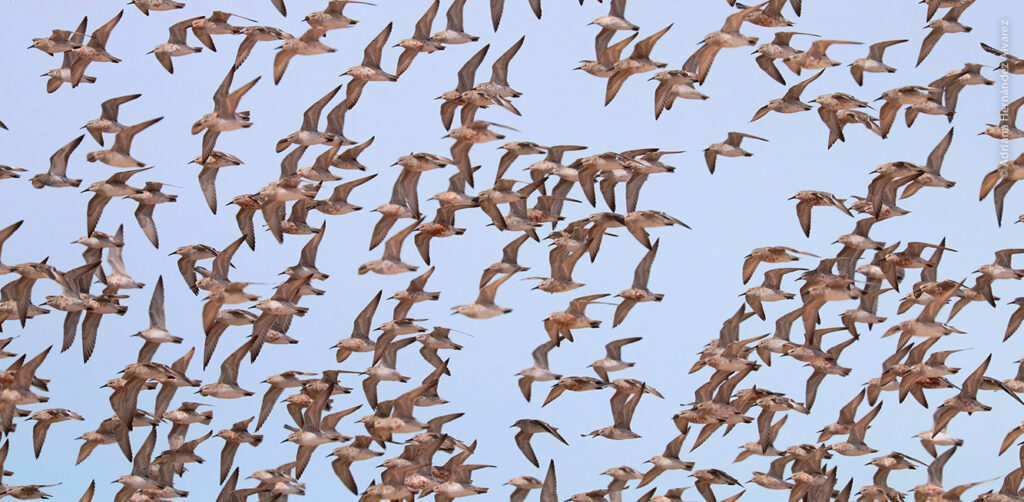In the distant month of October 2006, the staff of the Bird Laboratory of the Autonomous University of Baja California Sur (UABCS) banded for the first time a Red Knot (Calidris canutus roselaari) in the facilities of the Exportadora de Sal SA de CV, in Guerrero Negro, Baja California Sur. It was for banding purposes, placing a color flag with the code 000 on the bird´s leg. This task was carried out by a team of experts, led by Dr. Roberto Carmona Piña, scientific advisor to Pronatura Noroeste.
15 years later, on Thursday, March 25th, this same specimen was spotted and photographed on the southern part of Gulf of Santa Clara. Therefore, this sighting somehow proved that the marking of species for so long did not affect their survival, whose migratory habits allowed us to increase the knowledge on this emblematic species. The detection of the so called “Specimen 000” of Red Knot ocurred during the monitoring of migratory birds, a conservationist task coordinated by biologist Adriana Hernández Alvarez.

This bird with more than 16 years of age had been spotted before with its adult plumage. Its presence in the Gulf of Santa Clara helps us to prove that the annual migration of this species maintains its pattern in northwestern Mexico. It should be noted that in the last 50 years this and other migratory bird species have shown significant population declines. Among their main threats is the fact that their habitat is shared with humans.
It is important to remember that northwestern Mexico is essential for these North American birds, due to its geographic location as a transition land between the Nearctic and Neotropical ecoregions. The wetlands of northwestern Mexico represent the end of the migratory route for some of these birds, as well as an indispensable step to continue their journey to more southerly regions for others.
Now that the Easter holiday period is approaching, we invite you to take care of the habitat of the Red Knot and many other birds that use this area to feed and rest. As residents or tourists, we must ensure that migratory birds continue to visit us year after year.
Your support is very important. We invite you to contribute with us to continue this important conservation task.













